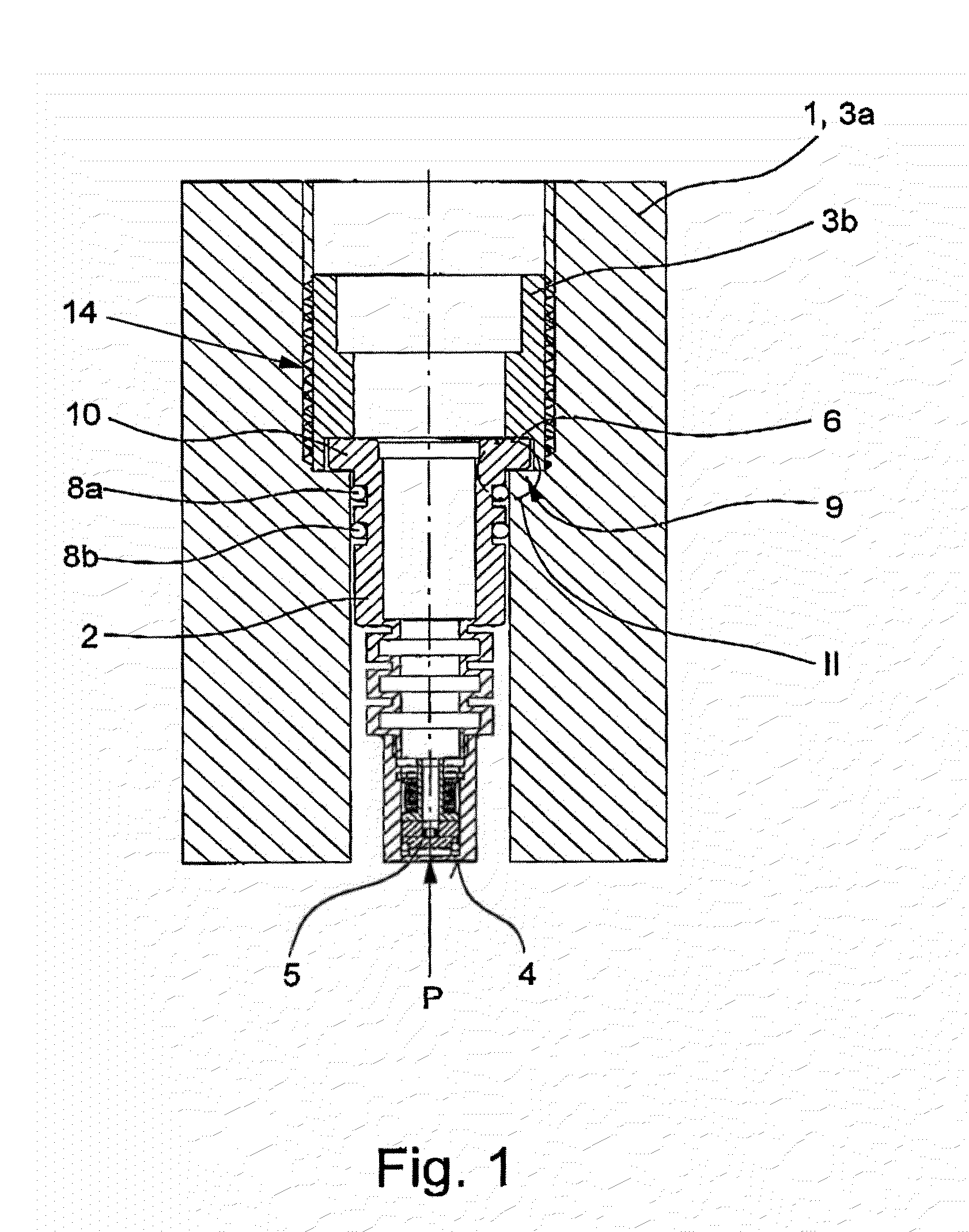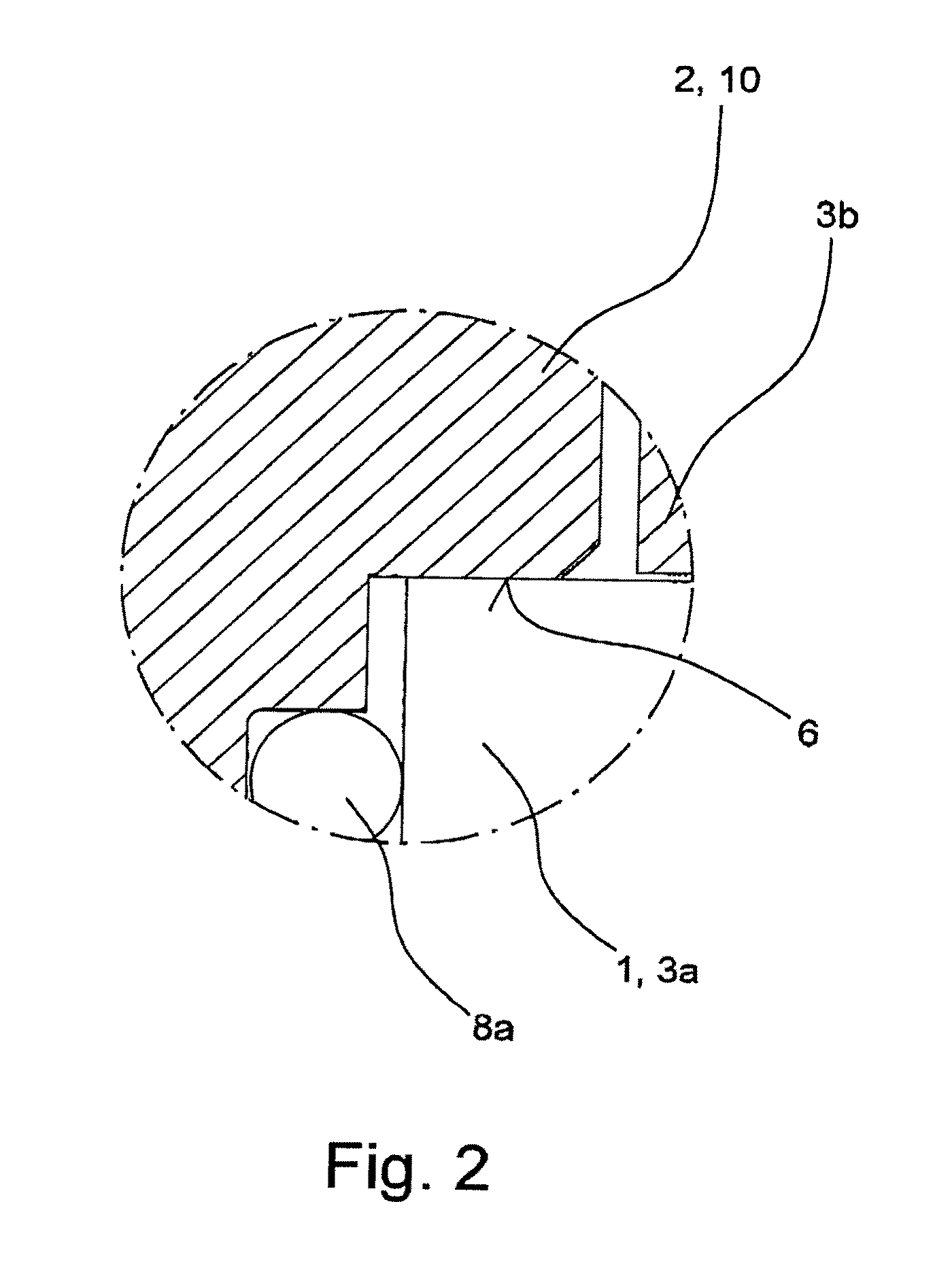Ultrasonic transducer
a transducer and ultrasonic technology, applied in the direction of liquid/fluent solid measurement, sound producing device, using ultrasonic/ultrasonic/infrasonic waves to analyze solids, etc., can solve the problem of ultrasonic signals being cross-talked, the proportion of transmission power is “lost”, and the total created oscillation energy is very low. problem, to avoid the effect of cross-talk
- Summary
- Abstract
- Description
- Claims
- Application Information
AI Technical Summary
Benefits of technology
Problems solved by technology
Method used
Image
Examples
Embodiment Construction
[0029]FIGS. 1 to 4 show an ultrasonic transducer according to the invention, which is provided for installation in an instrument housing 1, wherein the instrument housing 1 is only illustrated in FIGS. 1 to 3. The ultrasonic transducer comprises a transducer housing and a housing fixture, wherein the transducer housing can be put under the pressure of a medium in its installed state on its emitting and / or receiving side; the medium is not explicitly illustrated in the figures.
[0030]The figures are schematic insofar as that only the constituents of interest of the ultrasonic transducer are shown. For example, the wiring of the actual ultrasonic exciter 5 is not shown, which is implemented as a piezo-element in the embodiments. It is presently not of importance whether the transducer housing 2 is made of one or two parts, how the head of the ultrasonic transducer is constructed in detail, and for example, of which material the ultrasonic transducer is made on its emitting and / or recei...
PUM
 Login to View More
Login to View More Abstract
Description
Claims
Application Information
 Login to View More
Login to View More - R&D
- Intellectual Property
- Life Sciences
- Materials
- Tech Scout
- Unparalleled Data Quality
- Higher Quality Content
- 60% Fewer Hallucinations
Browse by: Latest US Patents, China's latest patents, Technical Efficacy Thesaurus, Application Domain, Technology Topic, Popular Technical Reports.
© 2025 PatSnap. All rights reserved.Legal|Privacy policy|Modern Slavery Act Transparency Statement|Sitemap|About US| Contact US: help@patsnap.com



